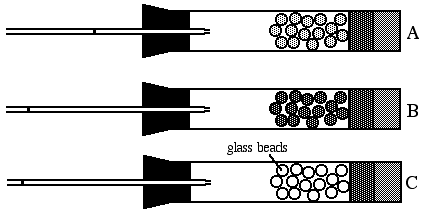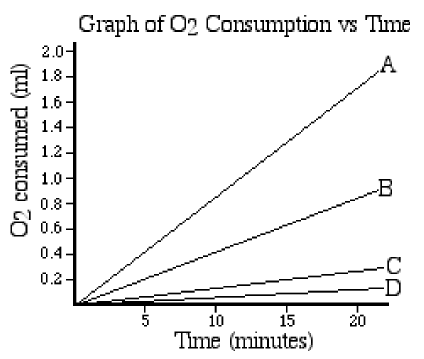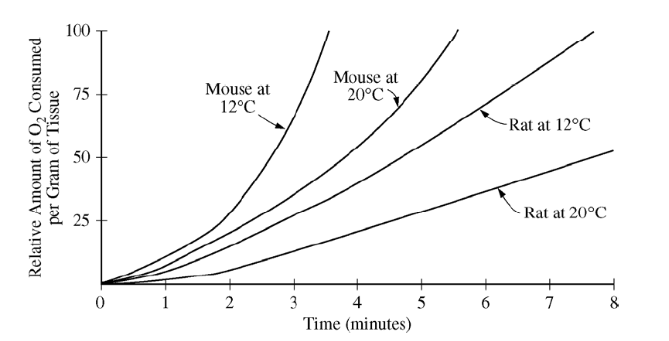Cellular Respiration - Extension Questions
1. To compare the rates of cellular respiration in germinating peas, nongerminating peas, and glass beads (inert control) using respirometers.

Which of the vials contain germinating seeds? Which contains the non-germinating seeds? How do you know?
2. The graph represents data from a respiration experiment.
Label each of the lines: cold, germinating | cold non-germinating | warm, germinating | warm, non-germinating

3. Repirometers can be used to measure the rate of respiration in animals also. The graph shows oxygen consumed by a 300 gram rat and a 50 gram mouse at different temperatures. Summarize the graph.

Answers / Explanation
1. A contains the germinating seeds, as the line of water is closer to the vial, indicating that oxygen was being consumed
2. A and B are both germinating seeds. A has a faster rate of respiration (slope) so it represents the warm germinating seeds. B is the cold germinating seeds. C and D are both non-germinating seeds. They still consume oxygen but at a slower rate C is warm, D is cold.
3. Smaller animals consume oxygen more quickly than larger ones (rats). Oxygen consumption is faster at lower temperatures for both mammals, because they require more energy to stay warm (endothermy).
Other Resources on Cellular Respiration
See Investigation: What Factors Effect Cellular Respiration?
Cellular Respiration Graphic Organizer
Rate of Respiration Virtual Lab – use a simulator to show change in respiration of germinating seeds
Case Study: The Cyanide Murders – explores cellular respiration and why we need oxygen